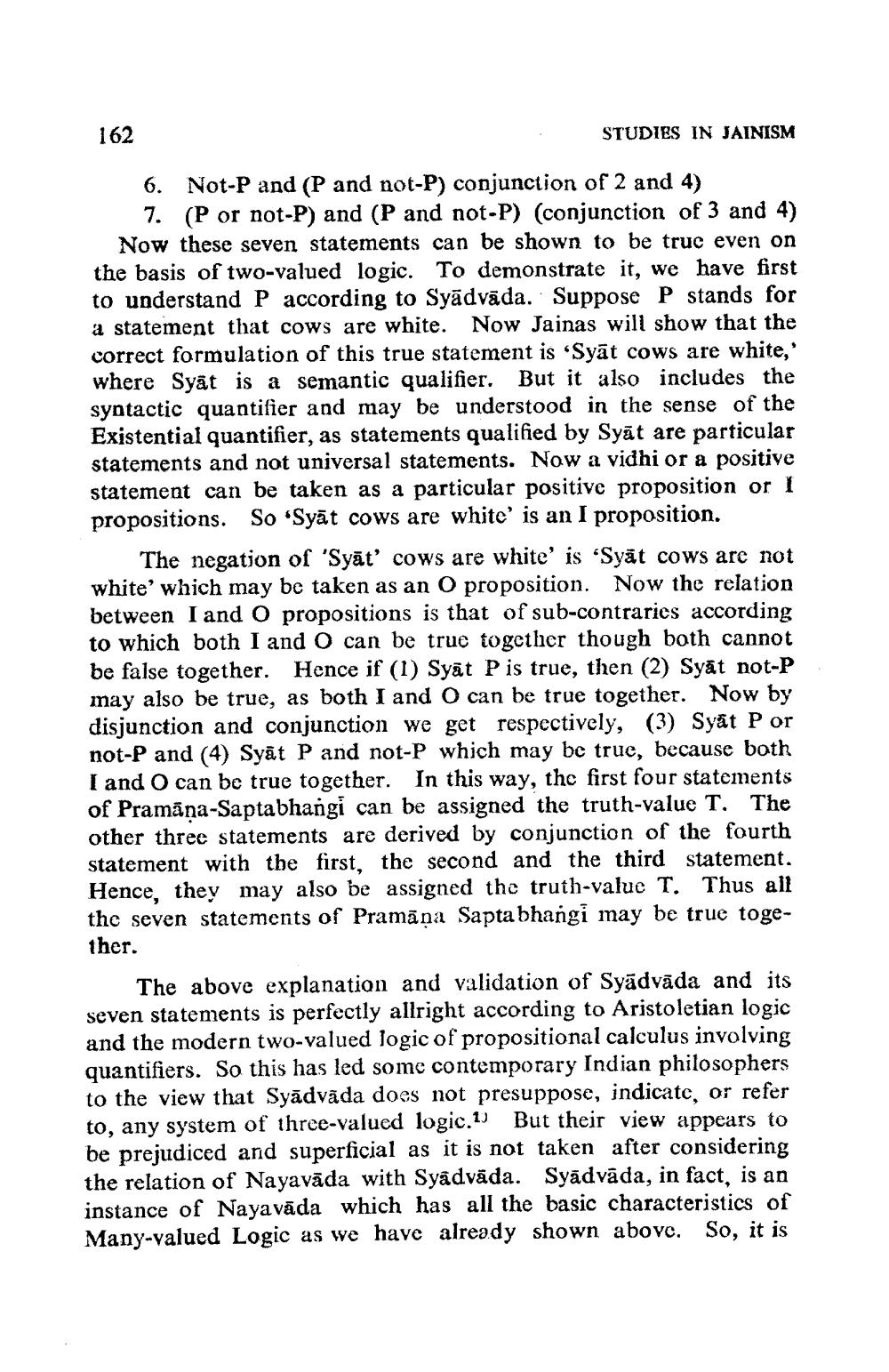________________
162
STUDIES IN JAINISM
6. Not-P and (P and not-P) conjunction of 2 and 4)
7. (P or not-P) and (P and not-P) (conjunction of 3 and 4) Now these seven statements can be shown to be truc even on the basis of two-valued logic. To demonstrate it, we have first to understand P according to Syādvāda. Suppose P stands for a statement that cows are white. Now Jainas will show that the correct formulation of this true statement is ‘Syāt cows are white, where Syât is a semantic qualifier. But it also includes the syntactic quantifier and may be understood in the sense of the Existential quantifier, as statements qualified by Syāt are particular statements and not universal statements. Now a vidhi or a positive statement can be taken as a particular positive proposition or I propositions. So 'Syāt cows are white' is an I proposition.
The negation of 'Syāt' cows are white' is ‘Syāt cows are not white' which may be taken as an O proposition. Now the relation between I and O propositions is that of sub-contraries according to which both I and O can be true together though both cannot be false together. Hence if (1) Syāt Pis true, then (2) Syāt not-P may also be true, as both I and O can be true together. Now by disjunction and conjunction we get respectively, (3) Syāt Por not-P and (4) Syāt P and not-P which may be true, because both I and I can be true together. In this way, the first four statements of Pramāņa-Saptabhangi can be assigned the truth-value T. The other three statements are derived by conjunction of the fourth statement with the first, the second and the third statement. Hence, they may also be assigned the truth-value T. Thus all the seven statements of Pramāna Sapta bhangi may be true toge1her.
The above explanation and validation of Syādvāda and its seven statements is perfectly allright according to Aristoletian logic and the modern two-valued logic of propositional calculus involving quantifiers. So this has led some contemporary Indian philosophers to the view that Syādvāda does not presuppose, indicate, or refer to, any system of three-valued logic.1) But their view appears to be prejudiced and superficial as it is not taken after considering the relation of Nayavāda with Syâdvāda. Syādvāda, in fact, is an instance of Nayavāda which has all the basic characteristics of Many-valued Logic as we have already shown abovc. So, it is




